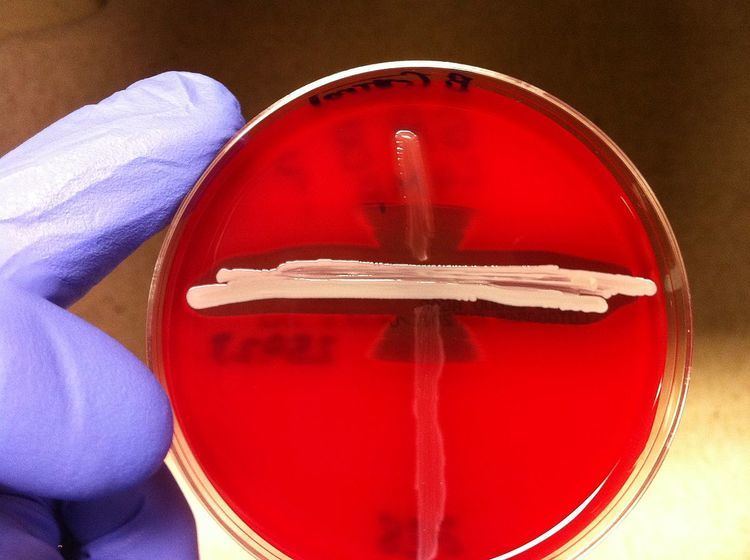 | ||
The CAMP test is a test to identify Group B β-streptococci based on their formation of a substance (CAMP factor) that enlarges the area of hemolysis formed by β-hemolysin from Staphylococcus aureus. It is frequently used to identify Group B Strep (Streptococcus agalactiae).
Contents
CAMP factor
Although usually used to identify group "B", there is some evidence that the CAMP factor gene is present in several groups of streptococci, including group "A".
A similar factor has been identified in Bartonella henselae.
Uses
It can be used to identify Streptococcus agalactiae. Though not strongly beta-hemolytic on its own, it presents with a wedge-shape in the presence of Staphylococcus aureus.
History
CAMP is an acronym for "Christie–Atkins–Munch-Petersen", for the three researchers who discovered the phenomenon.
It is often incorrectly reported as the product of four people (counting Munch-Petersen as two people). The true relationship (three people) is the reason for two en dashes and then one hyphen in "Christie–Atkins–Munch-Petersen".
The name has no relationship to cyclic adenosine monophosphate (cAMP).
